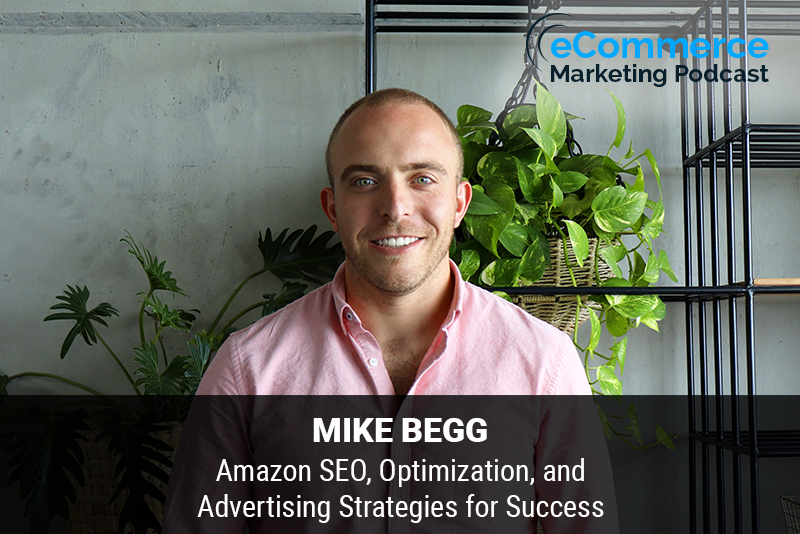
The eCommerce Marketing Podcast walks you through everything that goes into ecommerce marketing — from inbound marketing to paid advertising to conversions. Learn the strategies top marketing experts use to grow their businesses.
Marketing Strategies Revealed in this Episode:
- Why does a brand need to spend money on advertising if they are SEO optimized?
- The best ways to start marketing your product with a small advertising budget on Amazon
- Where do most brands fail when it comes to selling on Amazon?
- The future of retail brick and mortar vs. selling online

Episode Title: Amazon SEO, Optimization, and Advertising Strategies for Success – with Mike Begg
Host: Arlen Robinson
Guest: Mike Begg, Co-Founder of AMZ Advisers
In this episode, Arlen Robinson interviews Mike Begg, an entrepreneur with extensive experience in building eCommerce and online businesses, particularly through Amazon. Mike shares his journey from consulting and real estate development to founding AMZ Advisers, a company that helps brands succeed on Amazon through optimized advertising and SEO strategies. He also provides actionable tips for eCommerce brands to enhance their presence and sales on Amazon.
Key Takeaways:
- Importance of Online Presence (02:25)
- Due to COVID-19, businesses must reposition themselves online to survive. Mike emphasizes the necessity of a strong online strategy for both Amazon and direct-to-consumer sales through company websites.
- Transition from Real Estate to eCommerce (05:10)
- Mike discusses his shift from working in real estate development with Sears to starting his own Amazon business, highlighting the market changes that influenced his career path.
- SEO vs. Paid Advertising (10:45)
- Mike explains why relying solely on SEO is insufficient and how paid advertising can complement organic efforts to drive traffic and sales. He stresses the importance of a balanced approach.
- Amazon Advertising Strategies (17:30)
- Tips for starting with a small advertising budget on Amazon, including automatic campaigns and product targeting campaigns to maximize sales and gather useful data.
- Amazon SEO Techniques (27:10)
- Detailed insights into Amazon’s A9 algorithm and how sales velocity, sales history, and conversion rates impact rankings. Mike provides practical tips for keyword placement and avoiding keyword stuffing.
- Challenges in Competitive Categories (33:20)
- For highly competitive categories, brands need to invest in advertising to gain visibility and sales, leveraging both Amazon’s platform and external traffic sources like blogs and social media.
- Future of Retail (50:10)
- Mike shares his perspective on the future of brick-and-mortar stores, predicting a continued shift towards smaller footprint stores and an increase in online shopping convenience.
Guest Information: Mike Begg is the Co-Founder of AMZ Advisers, a company specializing in helping brands optimize their sales and advertising strategies on Amazon. With a background in consulting and real estate development, Mike brings a unique perspective to the eCommerce space.
Contact Mike Begg:
- Website: AMZ Advisers
- Email: [email protected]











